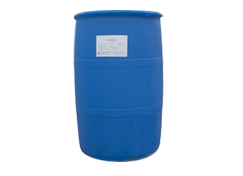Surfactant is a kind of compound that can significantly reduce the surface tension of water at very low concentration. It can associate to form micelles after reaching a certain concentration, so it has a series of physical and chemical functions and corresponding practical applications, such as anti viscosity, emulsification or demulsification, foaming or defoaming after wetting, solubilization, dispersion, washing, anti-corrosion, anti-static and so on Fine chemical products with a wide range of uses. Surfactants can be divided into ionic surfactants, amphoteric surfactants, non-ionic surfactants and special surfactants according to their hydrophilic structure.

The textile industry includes a series of processing processes from raw materials to products of natural fibers and synthetic fibers such as cotton, wool and hemp. In order to ensure the smooth progress of each process and improve the properties of textile fabrics, surfactants or other additives need to be added. There are more than 3000 kinds of surfactants used in the textile industry (more than half of the total number of surfactant commodities). Among them, there are five main categories of oiling agents: spinning oiling agents (used in synthetic fiber spinning), Textile oiling agent (used for single fiber spinning), knitting oiling agent, weaving oiling agent and lubricant for bobbin yarn are compounded with lubricating components. The latter two are mainly composed of wax and grease, and surfactant is the auxiliary component.
Refining and washing agents gradually require high temperature resistance, alkali resistance, low foam, fast and efficient, and new refining varieties to meet the requirements of new synthetic fibers are also increasing. Oxygen bleaching additives are required to have the function of eliminating eye damage when using hydrogen peroxide in addition to stable bleaching, dispersion and no scaling.
The varieties of dyeing auxiliaries and finishing agents have developed very rapidly. Dyeing auxiliaries include dispersant, fiber affinity leveling agent, dye affinity leveling agent, defoamer, etc., while finishing agents are mainly used for softening, fuzzing, flocking, antistatic, waterproof, oil repellent, flame retardant, water absorption processing, antifouling processing, antibacterial processing, etc.